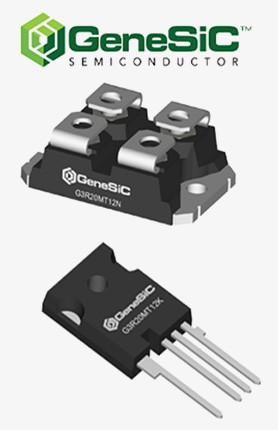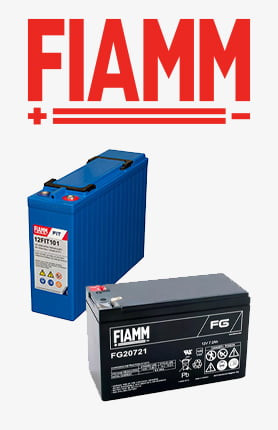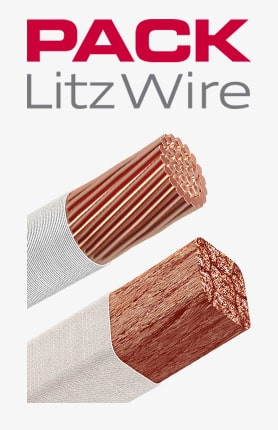-
BackX
-
Components
-
-
Category
-
Semiconductors
- Diodes
- Thyristors
-
Electro-insulated Modules
- Electro-insulated Modules | VISHAY (IR)
- Electro-insulated Modules | INFINEON (EUPEC)
- Electro-insulated Modules | Semikron
- Electro-insulated Modules | POWEREX
- Electro-insulated Modules | IXYS
- Electro-insulated Modules | POSEICO
- Electro-insulated Modules | ABB
- Electro-insulated Modules | TECHSEM
- Go to the subcategory
- Bridge Rectifiers
-
Transistors
- Transistors | GeneSiC
- SiC MOSFET Modules | Mitsubishi
- SiC MOSFET Modules | STARPOWER
- Module SiC MOSFET ABB’s
- IGBT Modules | MITSUBISHI
- Transistor Modules | MITSUBISHI
- MOSFET Modules | MITSUBISHI
- Transistor Modules | ABB
- IGBT Modules | POWEREX
- IGBT Modules | INFINEON (EUPEC)
- Silicon Carbide (SiC) semiconductor elements
- Go to the subcategory
- Gate Drivers
- Power Blocks
- Go to the subcategory
- Electrical Transducers
-
Passive components (capacitors, resistors, fuses, filters)
- Resistors
-
Fuses
- Miniature Fuses for electronic circuits - ABC & AGC Series
- Tubular Fast-acting Fuses
- Time-delay Fuse Links with GL/GG & AM characteristics
- Ultrafast Fuse Links
- Fast-acting Fuses (British & American standard)
- Fast-acting Fuses (European standard)
- Traction Fuses
- High-voltage Fuse Links
- Go to the subcategory
- Capacitors
- EMI Filters
- Supercapacitors
- Power surge protection
- TEMPEST emission revealing filters
- Surge arrester
- Go to the subcategory
-
Relays and Contactors
- Relays and Contactors - Theory
- 3-Phase AC Semiconductor Relays
- DC Semiconductor Relays
- Controllers, Control Systems and Accessories
- Soft Starters and Reversible Relays
- Electromechanical Relays
- Contactors
- Rotary Switches
-
Single-Phase AC Semiconductor Relays
- AC ONE PHASE RELAYS 1 series| D2425 | D2450
- One phase semiconductor AC relays CWA and CWD series
- One phase semiconductor AC relays CMRA and CMRD series
- One phase semiconductor AC relays - PS series
- Double and quadruple semiconductor AC relays - D24 D, TD24 Q, H12D48 D series
- One phase semiconductor relays - gn series
- Ckr series single phase solid state relays
- One phase AC semiconductor relays for DIN bus - ERDA I ERAA series
- 150A AC single phase relays
- Rail Mountable Solid State Relays With Integrated Heat Sink - ENDA, ERDA1 / ERAA1 series
- Go to the subcategory
- Single-Phase AC Semiconductor Relays for PCBs
- Interface Relays
- Go to the subcategory
- Cores and Other Inductive Components
- Heatsinks, Varistors, Thermal Protection
- Fans
- Air Conditioning, Accessories for Electrical Cabinets, Coolers
-
Batteries, Chargers, Buffer Power Supplies and Inverters
- Batteries, Chargers - Theoretical Description
- Modular Li-ion Battery Building Blocks, Custom Batteries, BMS
- Batteries
- Battery Chargers and Accessories
- Uninterruptible Power Supply and Buffer Power Supplies
- Inverters and Photovoltaic Equipments
- Energy storage
- Fuel cells
- Lithium-ion batteries
- Go to the subcategory
-
Automatics
- Spiralift Lifts
- Futaba Drone Parts
- Limit Switches, Microswitches
- Sensors, Transducers
-
Infrared Thermometers (Pyrometers)
- IR-TE Series - Water-proof Palm-sized Radiation Thermometer
- IR-TA Series - Handheld Type Radiation Thermometer
- IR-H Series - Handheld Type Radiation Thermometer
- IR-BA Series - High-speed Compact Radiation Thermometer
- IR-FA Series - Fiber Optic Radiation Thermometer
- IR-BZ Series - Compact Infrared Thermometers
- Go to the subcategory
- Counters, Time Relays, Panel Meters
- Industrial Protection Devices
- Light and Sound Signalling
- Thermographic Camera
- LED Displays
- Control Equipments
- Go to the subcategory
-
Cables, Litz wires, Conduits, Flexible connections
- Wires
- Cable feedthroughs and couplers
- Litz wires
- Cables for extreme applications
- Sleevings
-
Braids
- Flat Braids
- Round Braids
- Very Flexible Flat Braids
- Very Flexible Round Braids
- Cylindrical Cooper Braids
- Cylindrical Cooper Braids and Sleevings
- Flexible Earthing Connections
- Galvanized and Stainless Steel Cylindrical Braids
- PCV Insulated Copper Braids (temp. up to 85C)
- Flat Aluminium Braids
- Junction Set - Braids and Tubes
- Go to the subcategory
- Traction Equipment
- Cable Terminals
- Flexible Insulated Busbars
- Flexible Multilayer Busbars
- Cable Duct Systems
- Go to the subcategory
- View all categories
-
Semiconductors
-
-
- Suppliers
-
Applications
- CNC Machine Tools
- DC and AC Drives (Inverters)
- Energetics
- Energy bank
- Equipment and Components for Hazardous Areas [Ex]
- Equipment for Distribution, Control and Telecommunications Cabinets
- HVAC Automation
- Induction Heating
- Industrial Automation
- Industrial Protective Devices
- Machines for Drying and Wood Processing
- Machines for Thermoforming Plastics
- Mining, Metallurgy and Foundry
- Motors and Transformers
- Power Supplies (UPS) and Rectifier Systems
- Printing
- Temperature Measurement and Regulation
- Test and Laboratory Measurements
- Tram and Railway Traction
- Welding Machines
-
Assembly
-
-
Inductors
-
-
Induction devices
-
-
Service
-
- Contact
- Zobacz wszystkie kategorie
What is an electromechanical relay?

Relay is an electrical device that enables the control of electrical and electronic circuits. Depending on the design, a relay can operate as an electromechanical (electromagnetic) or semiconductor relay. It is an essential component in industrial automation, device control systems, and protection systems. It allows switching of high-power loads with minimal energy consumption in the control circuit, ensuring the safety and reliability of the entire system.
What is an electromechanical relay?
Electromechanical relay is a device composed of several basic parts: a coil, an armature, movable contacts, and a protective housing. It works on the principle of an electromagnet – when current flows through the coil, it generates a magnetic field that attracts the steel armature, causing the contacts to close or open. This allows control of the load circuit using a low-power control circuit.
Electromagnetic relays provide galvanic isolation between the control and load circuits, enhancing the safety of electrical and electronic devices. Their ability to switch high-power loads makes them suitable for industrial systems, automation installations, lighting systems, and electric motors.
Construction of an electromechanical relay
An electromechanical relay consists of several key components:
1. Coil – generates a magnetic field when voltage is applied. The coil can be powered by direct current (DC) or alternating current (AC), depending on the type of relay;
2. Armature – a movable element that opens or closes the contacts;
3. Contacts – can be normally open, normally closed, or changeover;
4. Housing – protects the components from external factors.
The magnetic field generated by the coil current attracts the armature, changing the state of the contacts. This simple yet effective operating principle allows electromechanical relays to control high-power devices with minimal energy consumption in the control circuit.
Principle of operation of an electromechanical relay
Electromechanical relays operate on the principle of an electromagnet. When current flows through the coil, it creates a magnetic field that attracts the movable armature. This movement closes or opens the appropriate contacts, allowing current to flow in the load circuit.
The relay operates in two states – energized and de-energized. Depending on the design, it may have normally open, normally closed, or changeover contacts, enabling on/off control of devices. Some relays also have timing functions that delay the switching on or off of the load, which is particularly useful in industrial automation.
Types of relays
Several basic types of relays are available on the market:
- Electromechanical (electromagnetic) relay – a classic type where an electromagnetic coil controls a set of movable contacts. It allows safe switching of high-power circuits using low-voltage signals;
- Solid-state relay (SSR) – uses electronic components such as transistors or triacs to switch circuits without moving parts. It is characterized by high durability, shock resistance, and fast operation;
- Time relay – has delay-on or delay-off functions, used in automation and control systems;
- Types of contacts – normally open (NO), normally closed (NC), and changeover (CO), allowing the relay to be adapted to specific applications.
Each type has its advantages and disadvantages – classic electromechanical relays are reliable and easy to service, while solid-state relays offer longer life, faster operation, and resistance to vibration.
Applications of electromechanical relays
Electromechanical relays are widely used in various fields of electronics and automation:
- Industrial automation – controlling motors, pumps, and other high-power devices;
- Lighting control – switching lighting circuits, including LED lighting;
- Protection systems – monitoring current and voltage in electrical circuits;
- Industrial equipment – controlling power supply and machine protection;
- Consumer electronics – switching circuits in electronic and electrical devices;
- Home automation – controlling low-voltage circuits in smart systems.
Electromechanical relays allow control of high-power loads with minimal energy consumption in the control circuit, improving the efficiency and safety of the entire system.
Advantages and disadvantages of electromechanical relays
Electromechanical relays have many advantages:
- high reliability in industrial applications,
- ability to control high-power circuits with low control current,
- galvanic isolation between control and load circuits,
- simple construction and ease of maintenance,
- various contact configurations for wide applicability.
Disadvantages include:
- presence of moving parts that wear out over time,
- limited switching frequency compared to solid-state relays,
- larger dimensions compared to modern solid-state devices.
Summary
Electromechanical relays are key components in automation, industrial electronics, and control systems. With a coil, armature, and movable contacts, they enable safe switching of high-power circuits with minimal energy consumption in the control circuit. They are used for controlling motors, lighting systems, protection circuits, and smart home automation. They are reliable, easy to service, and offer various contact configurations, making them adaptable to any application.
Electromechanical relays available in the DACPOL offer ensure reliable and safe circuit switching in automation, electronics, and energy systems. We encourage you to explore the full range of models suited for various industrial applications.
Related posts
 Thermally conductive materials in power storages
Thermally conductive materials in power storages
 Measuring power and energy in electric circuits
Measuring power and energy in electric circuits
 Wentylatory przemysłowe - rodzaje, właściwości
Wentylatory przemysłowe - rodzaje, właściwości




Leave a comment